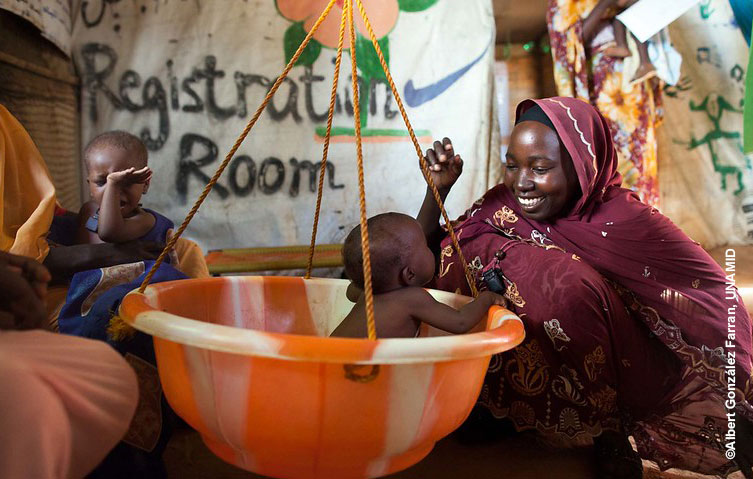How do food system interventions affect food security and nutrition? We’re mapping the evidence
Malnutrition is a global issue which disproportionately affects low- and middle-income countries (L&MICs). To make sure nutrition programmes that promote affordable, accessible, diverse and balanced diets for healthy growth and development are planned based on the best available evidence, we’re creating an evidence gap map (EGM) that will show which food system interventions have been studied. Know of any relevant research? Let us know!
Achieving adequate consumption and utilisation of food has great potential to improve human health, create thriving communities and reduce poverty. Progress on Sustainable Development Goal 2 shows the international community’s commitment to this effort. However, the ‘triple burden of malnutrition’ – undernutrition, micronutrient deficiency and obesity – remains a challenge. According to recent reports, between 2015 and 2017, the number of people that were undernourished increased from 784 million to 821 million. Among children under five years old, 49 million were stunted (chronically malnourished) in 2018. Obesity is also on the rise, with 38 million children and more than one in four adults being overweight or obese. These problems are at their worst in L&MICs, especially among those of lower socio-economic status.
One important way to address direct and underlying determinants of malnutrition is through the world’s food systems, which cover all the inter-linked processes from food production to its consumption. These systems are complex and vulnerable to global shocks, like climate change and COVID-19. Global warming and the increased prevalence of natural disasters can negatively affect our ability to produce food. The ways we produce, process, distribute and consume food, especially animal products, also significantly contributes to these changes. The current global health pandemic has resulted in several negative effects, including trade restrictions, local price increases and additional food waste. These negative effects, coupled with the existing challenges faced by fragile states, are expected to result in significant increases in levels of malnutrition. These complexities underpin the need for coordinated support across multiple sectors to develop sustainable and resilient food systems that deliver healthy diets to all.
Numerous ongoing efforts aim to identify the best approaches to improve food systems to address malnutrition in a sustainable and resilient manner. Initiatives such as the EAT-Lancet Commission developed scientific targets for achieving a healthy diet and sustainable food production by 2050. Available funding for nutrition research and programming has also increased from slightly under US$$1.1 billion in 2015 to US$1.4 billion in 2017. However, many believe this level of funding is still inadequate to reach the international community’s goals. Therefore, collecting evidence on which strategies are effective will be especially important to inform the 2021 UN Food Systems Summit, which seeks to transform food systems to tackle hunger and malnutrition, reduce diet-related diseases and heal the planet.
The systematic use of evidence can help inform decisions on what research to conduct, what interventions to implement and how to improve the effectiveness of programmes. The development of an EGM, which collates the best available impact evaluation and systematic review evidence on a topic, is often the first step in this process. This is why GIZ, through the programme Knowledge for Nutrition (K4N), commissioned 3ie to develop an EGM on the effects of food systems interventions on food security and nutrition outcomes. The K4N programme aims to increase the extent to which nutrition-related international development programmes funded by the German Federal Ministry for Economic Cooperation and Development (BMZ) and the European Commission are informed by the best-available evidence.
What comes next for our EGM? We have already developed a plan for implementing the map, and we are in the process of searching for and screening potentially relevant literature. This process includes searching a number of academic databases as well as a range of grey literature sources, such as institution websites. After screening, we will collect key information about each study and produce summary statistics to understand the evidence base in more detail. We will also map out gaps in the evidence. We plan to produce provisional results from the map in July, and final results will be made available on the 3ie Development Evidence Portal.
You can help us make sure our map is comprehensive. To supplement our systematic search strategy, we are keen to ask relevant researchers and development practitioners to share impact evaluations or systematic reviews that may be relevant for our map, especially those that are ongoing or not published. We hope to reduce the risk of excluding evidence by doing this. If you are aware of any studies that you think might be important for this EGM, we would like to hear from you! Please get in touch with Ingunn Storhaug (istorhaug@3ieimpact.org).

